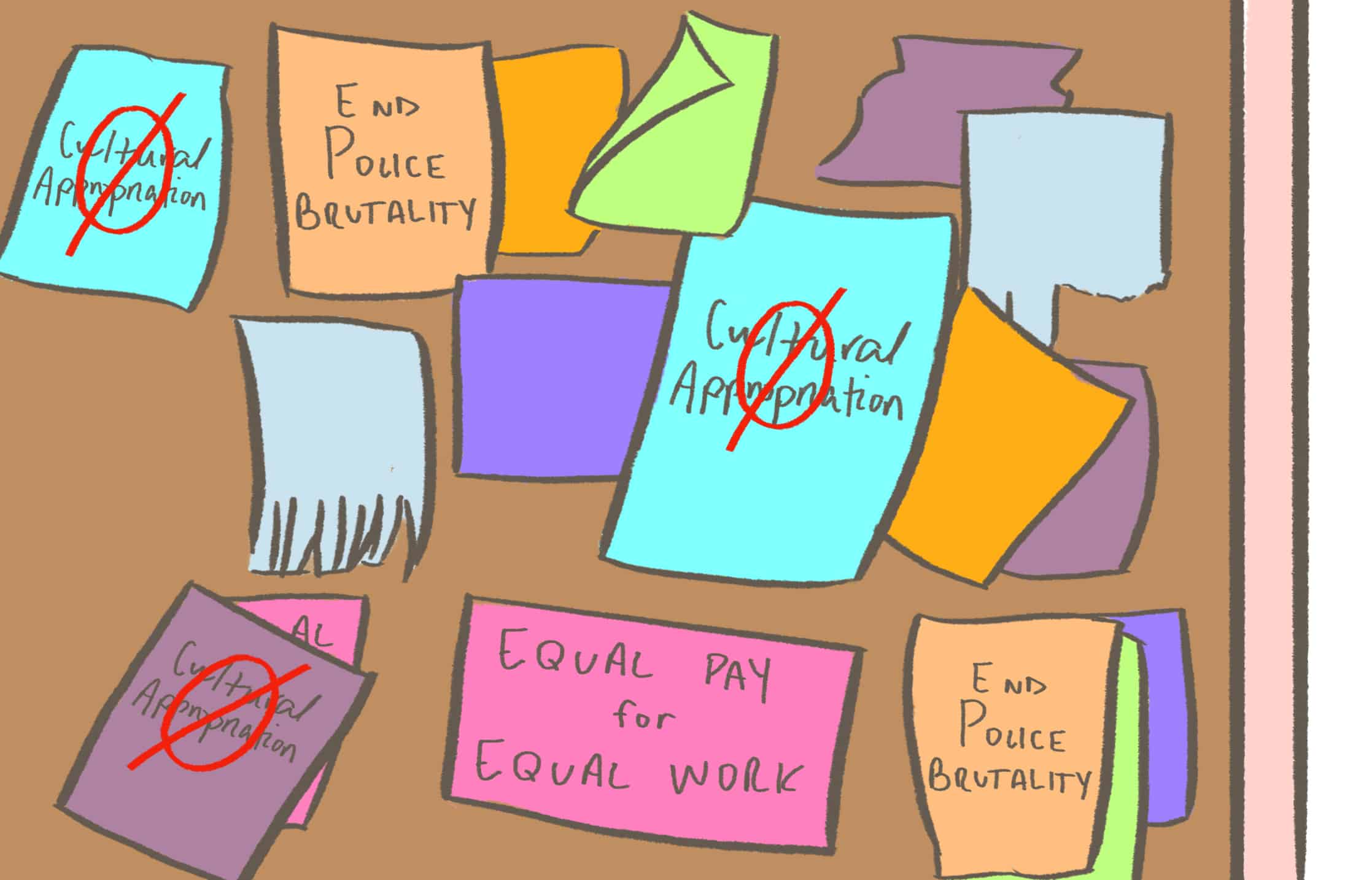[dropcap]A[/dropcap] new trend of using online media to challenge social injustice has been on the rise. As a result, cultural appropriation has become an increasingly relevant topic in race relations.
Cultural appropriation is when an aspect of one culture is taken by individuals belonging to another culture.
For example, an inarguable case of oppressive cultural appropriation is when white people wear Indigenous headdresses as a fashion statement, with no respect for the significance of the headdress. This is highly offensive due to the history of oppression between Indigenous people and colonizing Europeans – oppression that, in some forms, involved conscious efforts to eradicate Indigenous culture.
Of course, calling out individuals and institutions for appropriating culture is often done with good intentions. However, misguided charges of cultural appropriation are frequent. Outcries like this are a result of people perpetuating faulty definitions of cultural appropriation and simply jumping the gun before evaluating whether something is actually being appropriated. The proper definition is often misunderstood, because online news and social media validate misapplications of the term.
Cultural appropriation is indeed a valid form of oppression and a massive insult to those who have had their identities denied. However, some methods of challenging cultural appropriation can be misguided and can often make matters worse.
A viral video from San Francisco State University is an excellent example of how challenging what is perceived to be cultural appropriation can be misguided. In the video, Bonita Tindle, a young African-American woman, attacks Cory Goldstein, a white student who has dreadlocks.
Regardless of your opinion on whether Goldstein’s hair was an act of cultural appropriation, the video makes it clear why Tindle’s approach was wrong. Cultural appropriation or not, this is not an appropriate way to challenge social justice issues. No matter how offended you are, you have no right to put your hands on another individual.
Beyond that, attacking someone because you believe they are appropriating a culture is counterproductive for many reasons. For instance, it is often difficult to determine at first glance somebody else’s cultural background, especially in diverse cities such as San Francisco or Toronto.
[pullquote]There is a colossal difference between a yoga instructor offering a free yoga class on behalf of the university’s Centre for Students with Disabilities and a massive company like Lululemon Athletica profiting from the commercialization of yoga[/pullquote]
By confronting those who you believe to be appropriating a culture that doesn’t belong to them as Tindle did, you run the risk of attacking someone who is in fact practicing their own culture. The fact that many people do not understand the true meaning of appropriation further aggravates this problem and can lead to serious misunderstanding or offence.
This kind of approach also discredits those who fight against social injustice, culminating in the use of negative terms like ‘social justice warriors,’ ‘offended Tumblrites,’ and ‘fanatics’ to describe those who challenge systemic racism.
This is extremely damaging to legitimate social justice movements such as the #BlackLivesMatter movement, which has been speaking out about anti-Black racism and violence. The movement has been repeatedly labelled as an ‘overreaction,’ despite the important injustices it brings to light.
Hyper-analysis and overly aggressive challenges of cultural appropriation can distract from more pressing issues in race relations. There are many cases in which a person, institution, or company has been falsely accused of cultural appropriation.
For example, the University of Ottawa suspended yoga classes after receiving complaints that it was committing cultural appropriation. However, there is a colossal difference between a yoga instructor offering a free yoga class on behalf of the university’s Centre for Students with Disabilities and a massive company like Lululemon Athletica profiting from the commercialization of yoga.
While we continue to be offended by yoga classes, celebrities, and appropriated lunch foods, we overlook egregious instances of systemic racism. While legitimate cultural appropriation is a problem, calling out unsubstantiated incidents does not address it; furthermore, combating systemic racism and racially-charged violence is where the bulk of our social justice efforts should be focused.
Responses to charges of cultural appropriation can be ineffective, or produce unintended negative consequences. In the case of OttawaU’s yoga dilemma, the reinstatement of the yoga class culminated in hiring an Indian woman who believes she only got the position based on her race; she admitted to not having experience in teaching yoga to students with disabilities.
[pullquote]While we continue to be offended by yoga classes, celebrities, and appropriated lunch foods, we overlook egregious instances of systemic racism.[/pullquote]
These situations also fuel the problematic assumption that millennials are offended by everything, which unfortunately discredits young individuals who fight for social justice causes.
Cultural appropriation is a highly complex issue and is undoubtedly an oppressive form of racism; how it should be challenged needs to be intelligently determined. It is imperative that we are cognizant about how to properly police cultural appropriation, because aggressive attacks only serve to create a more divisive rhetoric.
Ultimately, the goal in fighting cultural appropriation is about opening a respectful dialogue that could lead to positive change; this means that challenges need to be conducted in a respectful and cautious way.
Stephanie Yaacoub is a third-year student at University College studying Peace, Conflict and Justice Studies and Near and Middle Eastern Civilizations.


